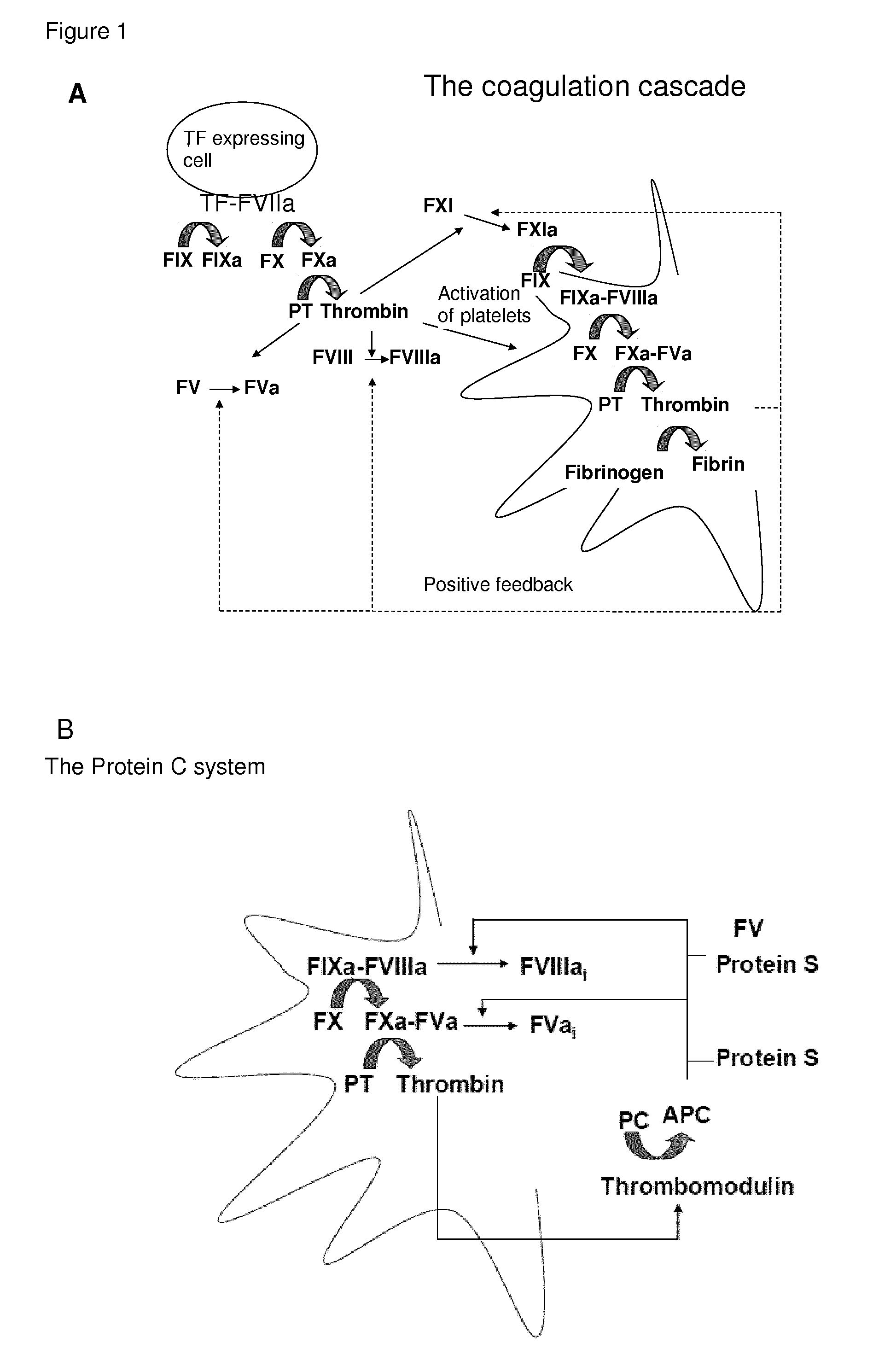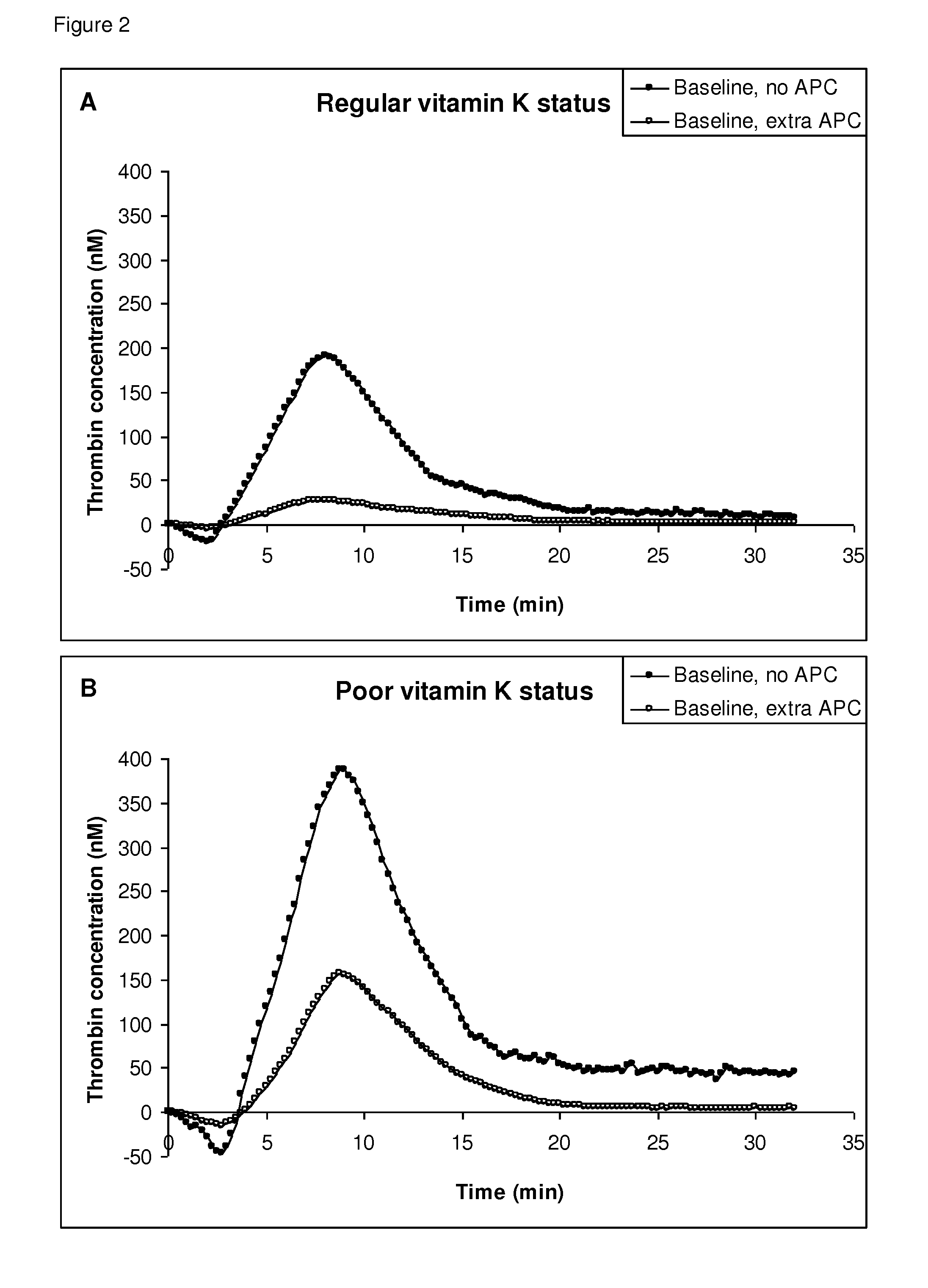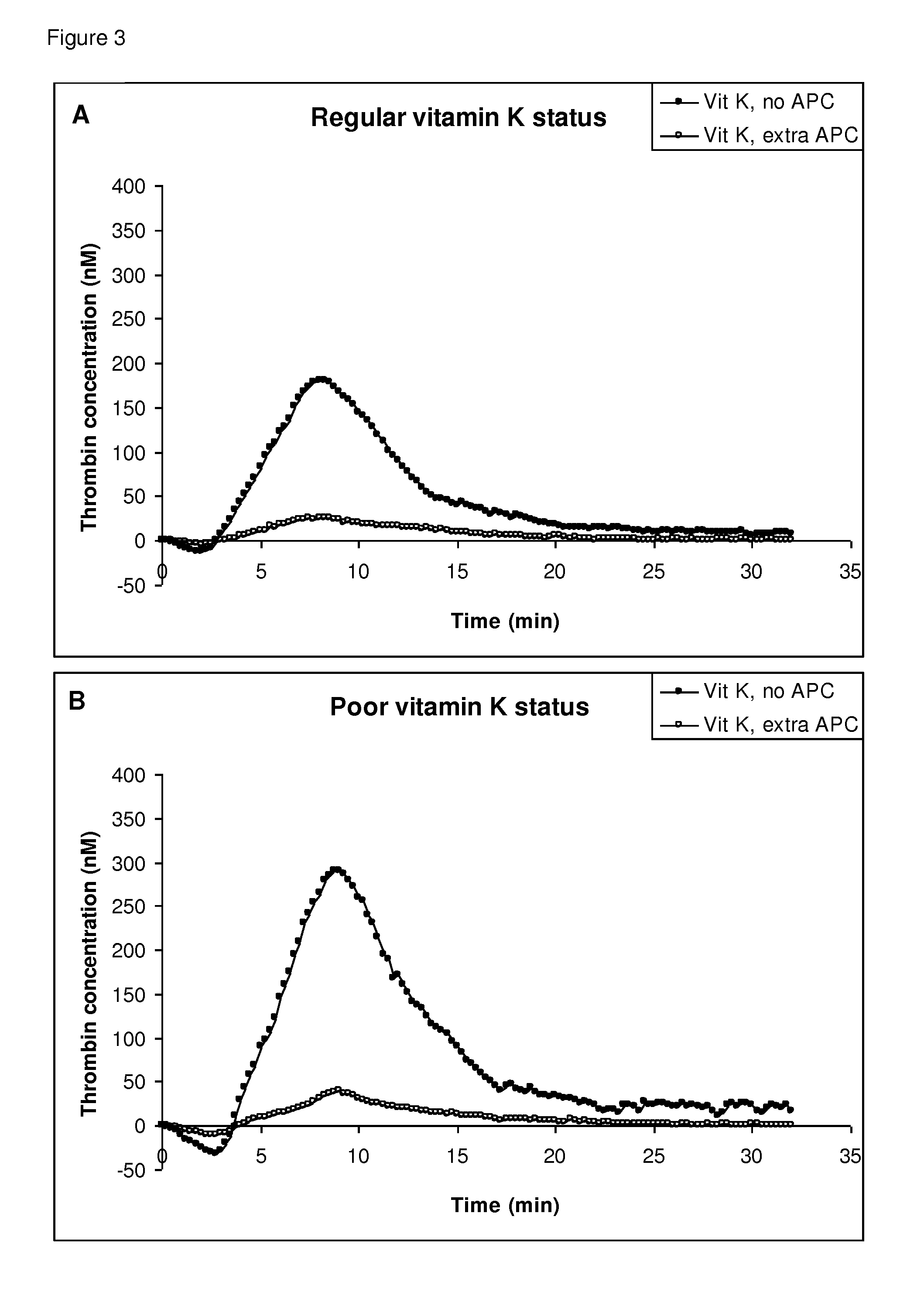Prevention and counteraction of diet-induced thrombosis risk
a thrombosis risk and diet technology, applied in the field of diet-induced thrombosis risk prevention and counteraction, can solve the problems of life-threatening pulmonary embolism, insufficient vitamin k status of vascular tissue in the majority of the population, and increased thrombosis risk or bleeding
- Summary
- Abstract
- Description
- Claims
- Application Information
AI Technical Summary
Benefits of technology
Problems solved by technology
Method used
Image
Examples
experiment 1
[0084]The vitamin K-status in 242 healthy postmenopausal women was measured on the basis of the ratio between uncarboxylated and carboxylated serum osteocalcin (ucOC / cOC ratio). From this group we selected the 30 subjects with the highest and the 30 subjects with the lowest ucOC / cOC ratio (highest and lowest vitamin K status, respectively) for measuring the ETP. Representative examples from both groups are given in FIGS. 2A and B (closed symbols). Surprisingly we found that in the group with the highest vitamin K status the ETP (i.e.: thrombosis risk) was significantly lower than that in the group with the lowest vitamin K status. If supplemented with an excess of activated protein C (APC, to induce maximal thrombin inhibition) both curves decreased significantly (FIG. 2, open symbols), but in the group with poor vitamin K status the remaining area under the curve was 40% rather than 10% in the group with highest vitamin K status. This is consistent with insufficient active (incompl...
experiment 2
[0085]Subsequently, 15 subjects from each group were treated with a high dose of vitamin K (MK-4, 45 mg / day) during three months, whereas the other 15 received a placebo. In both vitamin K-treated groups the ucOC / cOC ratio declined to virtually zero, indicating vitamin K sufficiency of the extra-hepatic tissues. The ucOC / cOC ratio in the placebo groups remained unchanged. In the group with a low ucOC / cOC ratio at baseline, vitamin K treatment resulted in a non-significant decline of the ETP both before and after adding APC. FIG. 3A shows the ETP curves from the same subject as in FIG. 2A, but now after 3 months of vitamin K treatment. In the group with a high ucOC / cOC ratio at baseline (poor vitamin K status), not only the average ETP dropped by 25%, also the ETP in the presence of excess APC was normalized to an average of 12.5% of the curves obtained in the absence of APC. FIG. 3B shows the ETP curves from the same subject as in FIG. 2B, but now after 3 months of vitamin K treatme...
experiment 3
[0086]On the basis of the ratio between uncarboxylated osteocalcin and total osteocalcin (ucOC / tOC ratio), 56 postmenopausal women were selected from a larger cohort and subdivided into three groups: lowest tertile for vitamin K status (ucOC / tOC ratio=0.20, n=19), middle tertile for vitamin K status (ucOC / tOC ratio=0.125, n=19) and highest tertile for vitamin K status (ucOC / tOC ratio=0.071, n=18). All participants were treated with 1 mg / day of vitamin K1 for one year, and the ETP was measured at baseline and after one year of vitamin K treatment. As is shown in FIG. 4, the group with the highest ucOC / tOC ratio had the highest ETP. Only in this group the ETP declined significantly after vitamin K supplementation. After one year of vitamin K treatment the average ETP was similar in all three groups.
[0087]The interventions described in experiments 2 and 3 were with a high dose of vitamin K (45 mg / day and 1 mg / day, respectively), which obviously is an excess. These experiments were mean...
PUM
| Property | Measurement | Unit |
|---|---|---|
| Fraction | aaaaa | aaaaa |
| Fraction | aaaaa | aaaaa |
| Mass flow rate | aaaaa | aaaaa |
Abstract
Description
Claims
Application Information
 Login to View More
Login to View More - R&D
- Intellectual Property
- Life Sciences
- Materials
- Tech Scout
- Unparalleled Data Quality
- Higher Quality Content
- 60% Fewer Hallucinations
Browse by: Latest US Patents, China's latest patents, Technical Efficacy Thesaurus, Application Domain, Technology Topic, Popular Technical Reports.
© 2025 PatSnap. All rights reserved.Legal|Privacy policy|Modern Slavery Act Transparency Statement|Sitemap|About US| Contact US: help@patsnap.com



